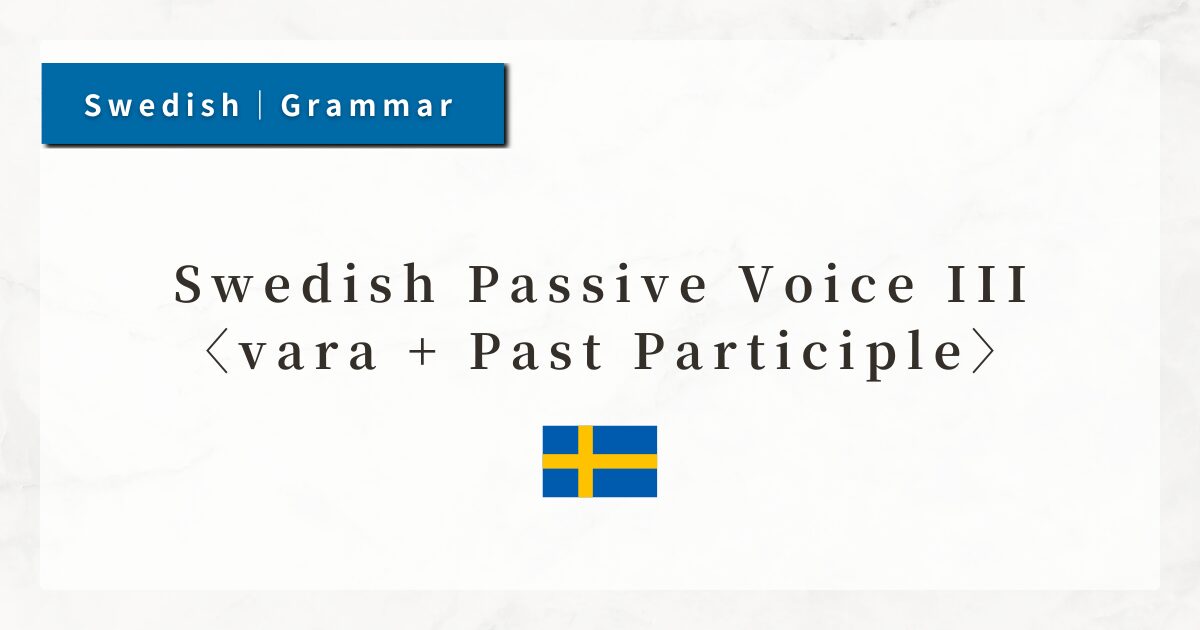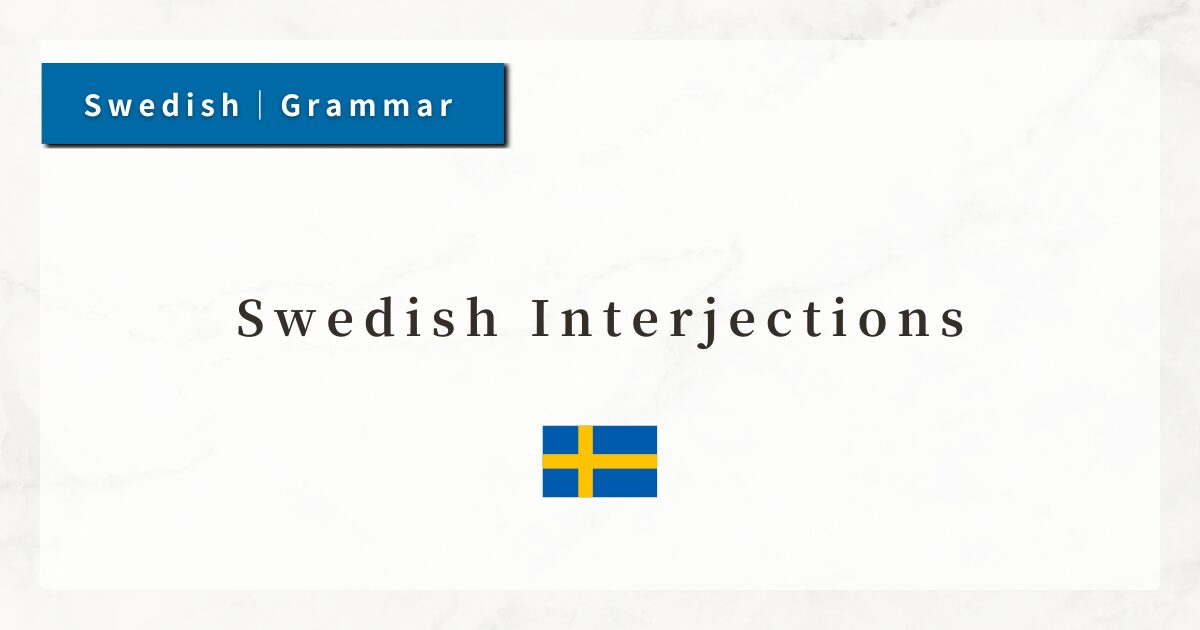#10 How to Form Wh-Questions in Swedish|Basic Rules and Examples

When I want to ask “Who?”, “Where?”, or “Why?” in Swedish, I use interrogative words. These are equivalent to English “Wh-questions” and are essential for drawing out specific information from someone.
They are used in everyday conversation, self-introductions, shopping, traveling, and almost any situation. That is why it is important to understand their sentence structure clearly.
In this lesson, I explain the types of interrogatives, the rules of word order, and common usages and pitfalls in detail.
1. What Are Interrogatives?
In Swedish, interrogatives are key words used to ask about the focus of a question.
The main Swedish interrogatives are as follows. Many of them resemble English words, which makes them easier to memorize.
| Interrogative | Meaning | Example |
|---|---|---|
| Vad | what | Vad heter du? (What is your name?) |
| Vem | who | Vem är han? (Who is he?) |
| Var | where | Var bor du? (Where do you live?) |
| När | when | När kommer tåget? (When does the train arrive?) |
| Hur | how | Hur mår du? (How are you?) |
| Varför | why | Varför studerar du svenska? (Why are you studying Swedish?) |
| Vilken / Vilket / Vilka | which (changes with gender/number) | Vilken bok läser du? (Which book are you reading?) |
| Hur mycket / Hur många | how much / how many (quantity / number) | Hur många syskon har du? (How many siblings do you have?) |
2. Word Order Rules and Basic Structure
In Swedish interrogative questions, word order is crucial.
The basic structure is: Interrogative + Verb + Subject + (Other elements)
This follows the Swedish V2 rule (the verb must come in the second position). Even when the interrogative word appears at the beginning, the verb still remains second.
- Vad gör du?
(What are you doing?) - Var bor han?
(Where does he live?) - När börjar lektionen?
(When does the lesson start?)
If I break the word order, the meaning becomes unnatural, or sometimes the sentence fails altogether. That is why it is best to memorize the pattern first.
3. Common Interrogatives and Their Usage
3-1. Vad (what)
The most basic interrogative, used to ask about actions or names of things.
- Vad heter du?
(What is your name?) - Vad gör du?
(What are you doing?)
“Vad” is usually followed by a verb, often combined with gör (do) or heter (to be named).
3-2. Vem (who)
Used when asking about people.
- Vem är han?
(Who is he?) - Vem pratar du med?
(Who are you talking with?)
It is often used together with prepositions like med (with).
3-3. Var / Vart (where / where to)
Var asks about a current location, and Vart asks about direction or destination. This is similar to English “Where is ~ ?” vs. “Where are you going?”
- Var är boken?
(Where is the book?) - Vart går du?
(Where are you going?)
These two are easy to confuse, but they change the meaning significantly.
3-4. När (when)
Used for asking about time.
- När kommer tåget?
(When does the train arrive?) - När börjar skolan?
(When does school start?)
After när, the usual order is verb + subject.
3-5. Varför (why)
Used to ask for reasons.
- Varför studerar du svenska?
(Why are you studying Swedish?) - Varför är du trött?
(Why are you tired?)
To answer, it is natural to use “för att 〜”(because 〜).
3-6. Hur (how)
Used to ask about methods or conditions.
- Hur mår du?
(How are you?)
→ A standard greeting. - Hur kommer du till jobbet?
(How do you get to work?)
Expressions with hur are very common and appear frequently in idiomatic phrases.
3-7. Vilken / Vilket / Vilka (which ~)
This interrogative changes depending on the gender or number of the noun that follows.
- Vilken bok läser du?
(Which book are you reading?) - Vilket hus är ditt?
(Which house is yours?) - Vilka filmer gillar du?
(Which movies do you like?)
→ en-noun = vilken, ett-noun = vilket, plural = vilka.
3-8. Hur många / Hur mycket (how many / how much)
Used when asking about numbers or quantities.
- Hur många syskon har du?
(How many siblings do you have?) - Hur mycket pengar har du?
(How much money do you have?)
Point: Hur många = countable nouns, Hur mycket = uncountable nouns.
4. Summary
- In Swedish, I use interrogatives to ask “what,” “who,” “where,” and similar questions.
- The basic order is: Interrogative + Verb + Subject + Complement.
- The verb must always come in the second position (V2 rule).
- Pay attention to distinctions such as Var / Vart and Hur många / Hur mycket.
- Vilken / Vilket / Vilka change depending on the gender and number of the noun, so it is useful to learn them together.




